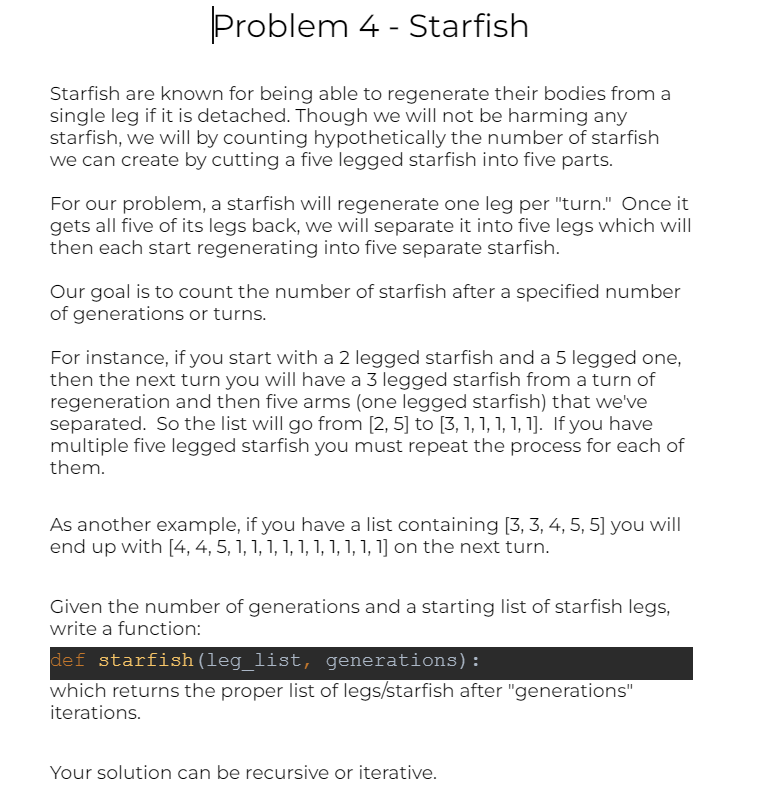Question

Asked By SolarVoyager47 at
Answered By Expert
Jasper
Expert · 1.5k answers · 1k people helped
Step 1/2
The working code for the starfish problem is as follows:
Explanation:
This function effectively simulates the regeneration and splitting process of starfish for the given number of generations and provides the leg count for each category of starfish.
Step 2/2
Explain the starfishing process step by step:
After it has processed all the constellations in the current generation, it uses a new_list to create a new leg_list. This prepares the next generation.
.
Final Answer
Once all generations are mapped, iterating through the final leg_list calculates the frequencies of starfish with 1, 2, 3, 4, and 5 legs . The list leg_count is used to keep track of the counts for each leg.
Finally, it returns the leg_count list, representing the number of stars with legs 1 through 5 after the specified number of generations.
Output :
{1: 5, 2: 5, 3: 5, 4: 1, 5: 1}
{1: 0, 2: 25, 3: 0, 4: 25, 5: 25}
{1: 15, 2: 0, 3: 0, 4: 0, 5: 0}
{1: 625, 2: 0, 3: 0, 4: 0, 5: 0}
{1: 0, 2: 0, 3: 0, 4: 0, 5: 25}
🧑🏫 More Questions
👉 Interested in exploring further?
Chrome Extension
1. Search answers from our 90+ million questions database.
2. Get instantly AI Solutions powered by most advanced models like GPT-4, Bard, Math GPT, etc.
3. Enjoy one-stop access to millions of textbook solutions.
4. Chat with 50+ AI study mates to get personalized course studies.
5. Ask your questions simply with texts or screenshots everywhere.